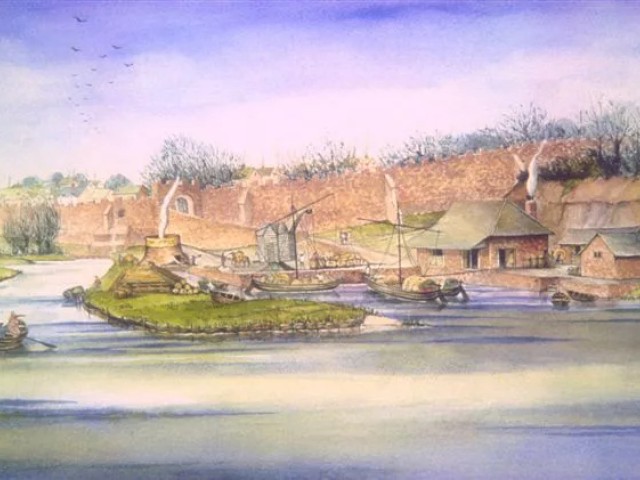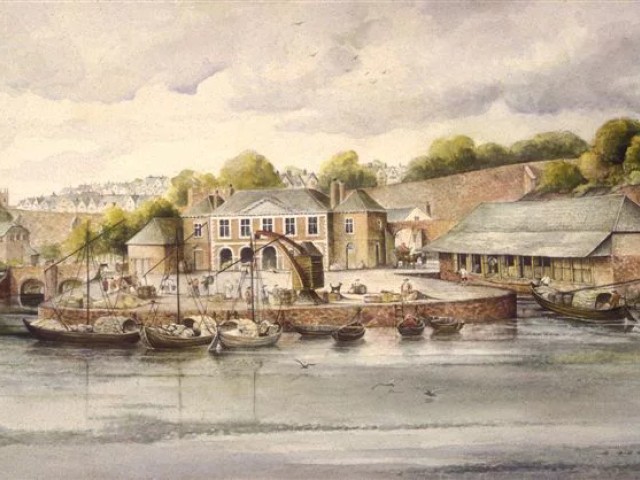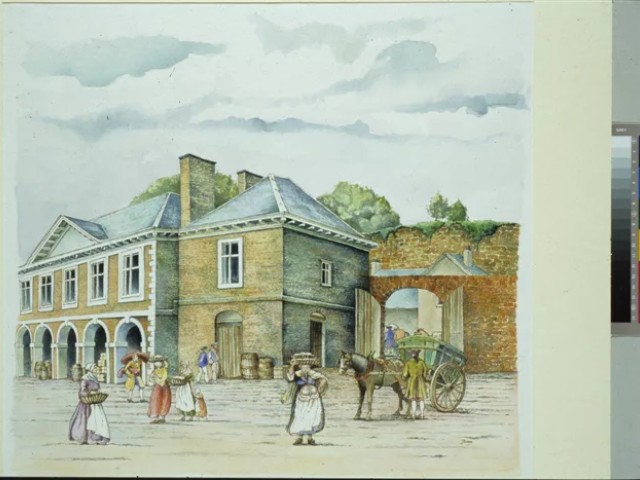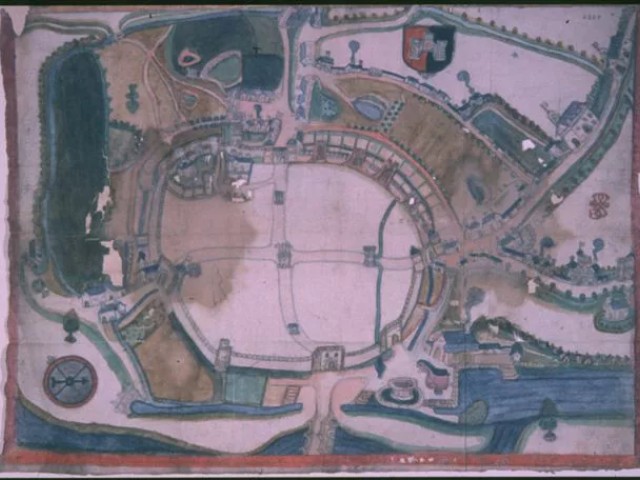1280AD
The marshland outside the western city wall was drained in the Saxon period, probably by improving the Roman leats, if they existed, or by increasing the number. By the beginning of the 13th century this was Exeter's main industrial area, with water powering mills, tanneries and breweries. There is reference to stone buildings along the quayside from 1240 onwards and it is likely that the area was in constant use for grinding corn and fulling woollen cloth. Access to the sea meant that goods could be moved from the Quay direct to the near Continent.
In 1284 this trade was challenged by the actions of the Countess of Devon, Isabella de Fortibus, who built a weir across the river to power her mills, leaving only a 30 foot gap. In 1311 her successor, Hugh de Courtenay, blocked up the gap completely, cutting off Exeter from the sea. Shipping was forced to dock at Topsham, pay dues there and use the Courtenay warehouses. Exeter's warehouses lay empty. Endless legal arguments failed to change this situation until an Act of Parliament in 1540 allowed Exeter to reopen the river, but by then it was so silted up that even the smallest of vessels struggled to reach the Quay. The solution proposed was a canal.
John Trew was appointed to construct the canal, initially on the basis of making the Exe navigable from its mouth to the City's water gate for ships of up to eight or ten tons. His first plan was to build the canal to the east of the Exe, using the St James leat, but this was soon abandoned in favour of the west side, using the flatter land in the parishes of St Thomas and Alphington. A weir was built at St Leonards and the water for the canal diverted from there. Although opened in 1566, many structural problems were encountered up to the late 1590s, as well as significant financial and legal issues for Exeter's governing body in maintaining and operating the canal.




